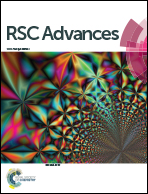Multiple overlap extension PCR (MOE-PCR): an effective technical shortcut to high throughput synthetic biology†
Abstract
The current study describes multiple-overlap-extension PCR (MOE-PCR) as a simple and effective approach to assembling multiple DNA fragments with various sizes and features in a single in vitro reaction. In this research, 50 bp of homology in overlapping DNA fragments and a specific touchdown PCR program resulted in successful assembly of eight different DNA fragments using a single PCR protocol. The simplicity, speed, reliability and cost-effectiveness of MOE-PCR offers it as an attractive method for assembling and/or cloning single and multiple DNA fragments. Indeed, the method is a one-step approach that eliminates some of the routine steps such as ligation and complex enzymatic reactions as well as sequence limitations of the other methods. The applications of this relatively high fidelity method could be extended to the construction of chimeric recombinant sequences that can be widely used in metabolic engineering, functional analysis of genes and genetic elements, expression studies of multi-domain proteins, protein engineering and the most recent genome editing strategies which together with synthetic biology are revolutionizing the life sciences. We expect the technique to be used as a robust, reliable and fast method in synthetic biology.


 Please wait while we load your content...
Please wait while we load your content...